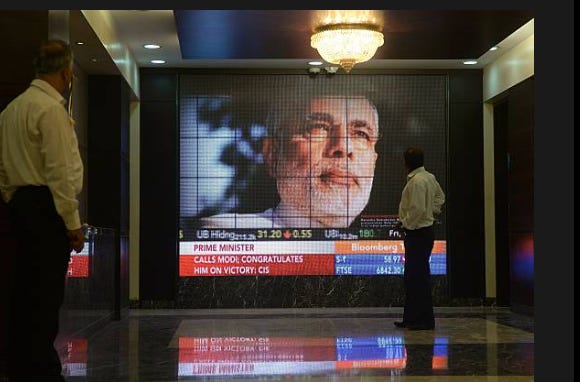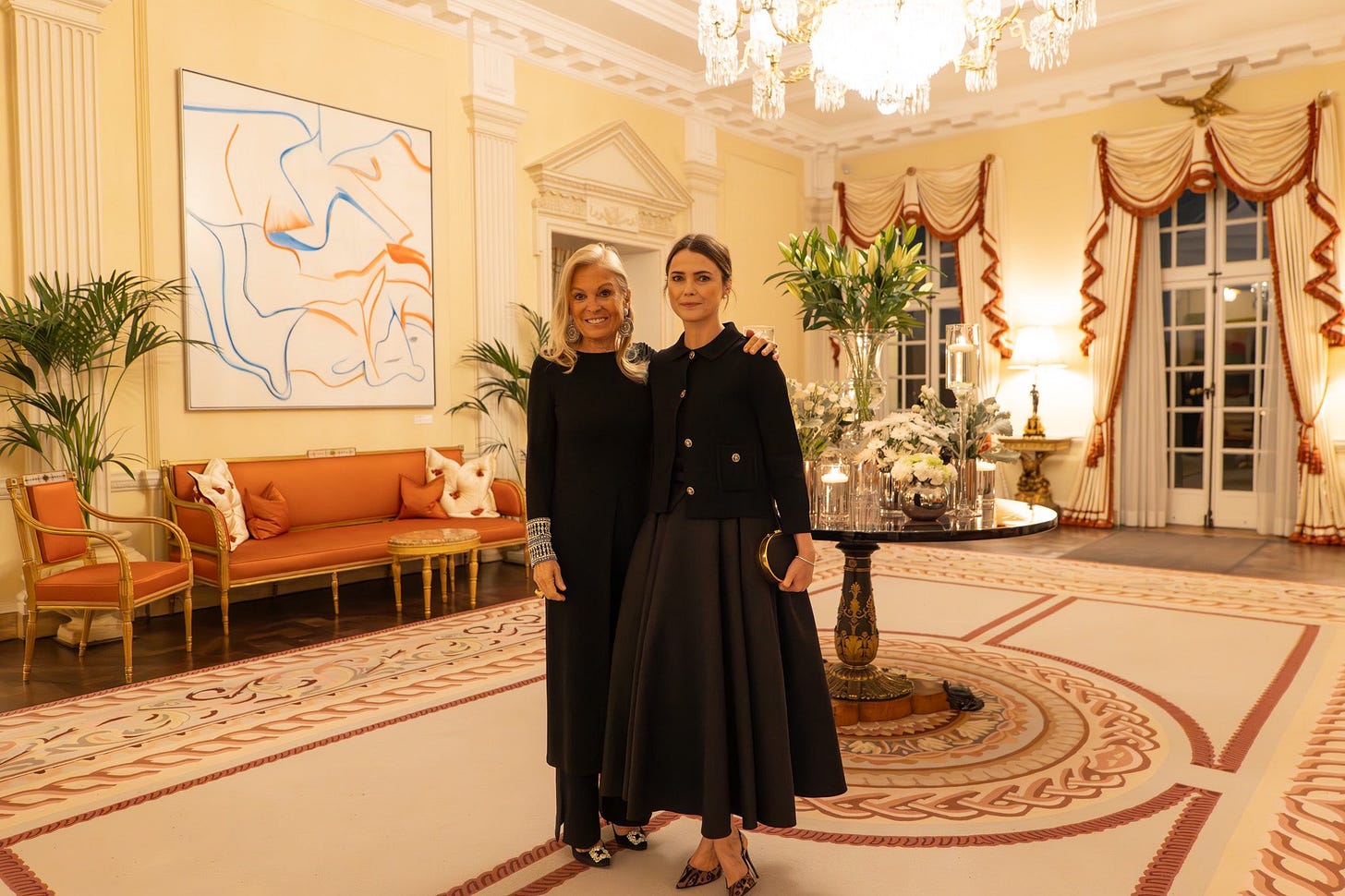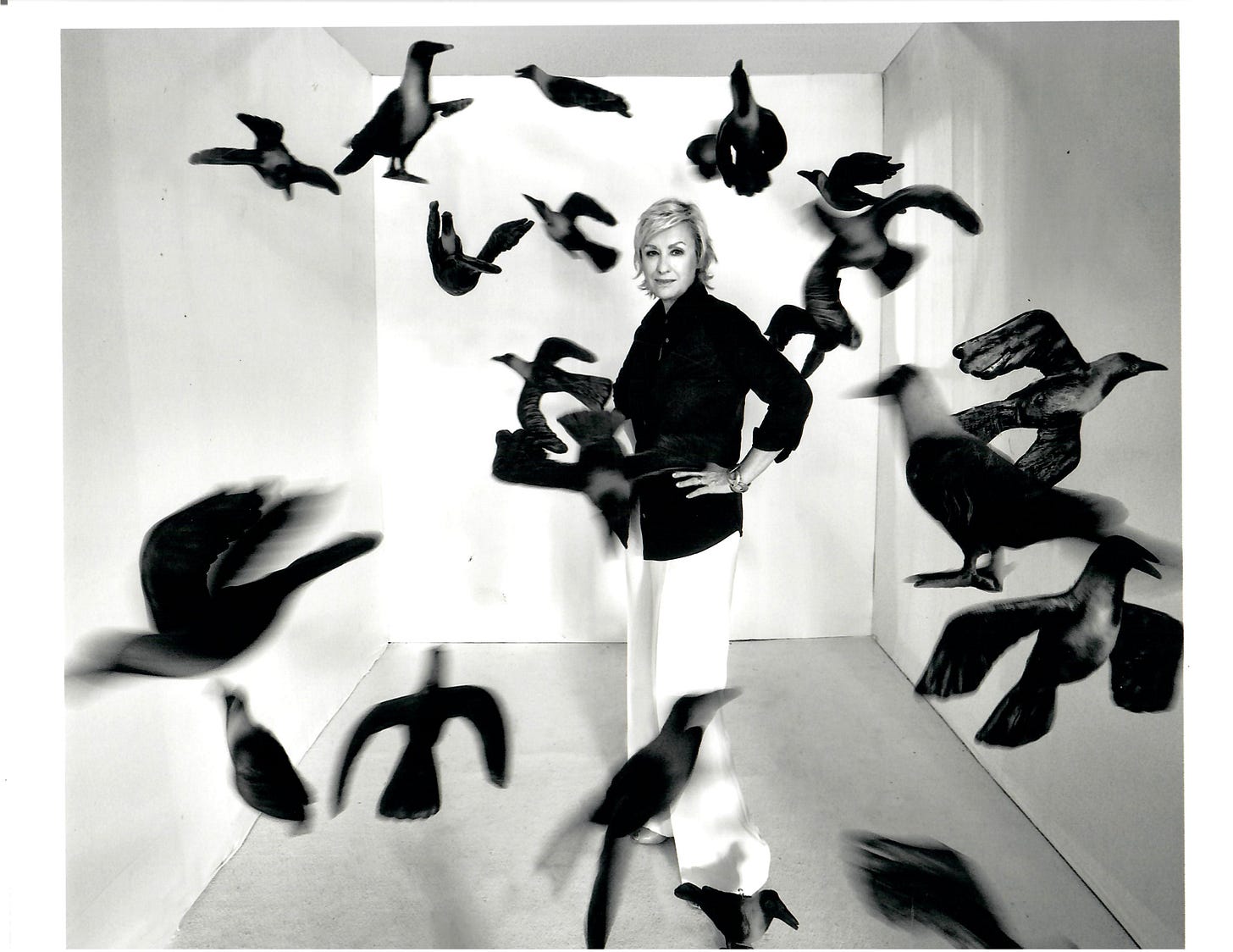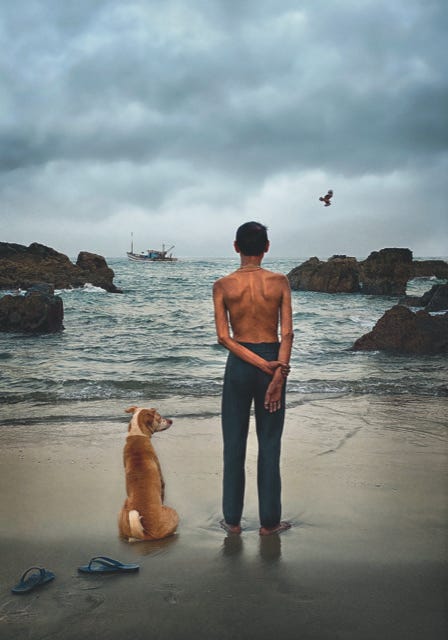What Trump could learn from Modi
U.S. media owners are digging their own grave by capitulating to a temporary tyrant.
Even a few days at the Jaipur Literary Festival, from which I just returned laden with books by Buddhist poets and yellow saris I will never wear, gave me some critical distance on Trump hysteria. Many in India see Trump’s war on the American press as a more loudmouthed mirror image of their own experience with authoritarian journalistic censure. Prime Minister Narendra Modi’s reign has just entered its third term and his deployment of lawfare, advertiser harassment, and pressure on media barons to eject critics of his administration is now, after 11 years, both widely accepted and creatively resisted, often by individual journalists with their own platforms who refuse to be cowed.
The journalist Modi would probably most like to shut down is Dhruv Rathee, a handsome 30-year-old Indian living in Germany who has amassed 27 million followers on YouTube (more than Modi) by posting fiery critiques of the prime minister. In his trademark T-shirt, Dhruv delivers charismatic 30-minute homilies in Hindi with flashy graphics and simple explanatory sentences. Such is his reach, he’s been called Modi’s most effective critic.
At the other end of the spectrum is the NDTV network veteran Ravish Kumar who has successfully transplanted his Modi critiques to YouTube. And my friend Barkha Dutt, the former war correspondent and fellow NDTV star until her tough and objective reporting on the Modi government was no longer viable at the beleaguered network, pivoted to her own nimble video platform Mojo Story. During the pandemic, Modi’s sudden absolutist lockdown shut down airports, trains, and all forms of public transport. Hundreds of thousands of starving migrant workers who served the cities’ moneyed elites had to make tortuous, often barefoot treks for hundreds of miles to their home villages, many dying by the roadside. Barkha and her cameraman were two of the very few Indian reporters following them by car, which served as their studio and where she often slept, to document the colossal loss of human life that the government was undercounting.
What is now becoming clear is that the Modi magic is waning and the press is smelling his vulnerability. His invincibility aura took a hit in last year’s election when, far from winning the landslide victory the 73-year-old demagogue had thought was in the bag, his BJP party failed to win a majority, forcing him to govern with a coalition. Last summer, the Modi government tried to put all video content on platforms such as YouTube under official control but the media, including many who had made a virtue of silence, forced him to back down. So while the bulk of the Indian media, including all broadcast TV, remains supine, other parts of India’s media resistance are gaining in confidence. News outlets like The Wire, The Print, Alt News, and stalwarts like The Caravan, The Hindu, and the Indian Express refuse to be daunted. The writing is on the wall: Modi’s toadies have an expiration date.
Meanwhile in the U.S., during this moment of Trump triumphalism, it’s easy to forget that the Big Mac mastodon will be a quacking lame duck in two years. The notion he would bring steely focus to his second term has already been blown up by a cascade of chaotic edicts. Owners of American mainstream media are digging their own grave by capitulating to a temporary tyrant. They will find themselves outperformed, outshone, and outmaneuvered by passionate young news Turks breaking stories from tiny digital newsrooms, and by the reinvigorated voices of seasoned truth tellers on new platforms who left the stale flagships they were once proud to call their professional home. As for Trump, I suspect he will discover that the press is both mightily rude and rudely mighty. By nature, journalists are watchdogs, not lapdogs. The British MP Enoch Powell once noted, “For a politician to complain about the press is like a ship’s captain complaining about the sea.” Namaste.
Transatlantica
This week, everyone (including me) is celebrating the return of U.S. Ambassador to the UK Jane Hartley with a stream of lunches and parties. Hartley, a petite blonde with unerring EQ and a canny diplomatic sense, married to Evercore Chairman Emeritus Ralph Schlosstein, has been a roaring success at the Court of St. James’s. Before she departed for the UK, she was promised one thing: a posting in a country with political stability. Cut to the four prime ministers and five chancellors of the exchequer who have hurtled through those posts during her tenure. Just three months after Hartley arrived, the shambolic PM Boris Johnson was booted. His fly-by successor Liz Truss famously had the shelf life of a lettuce, and then came the historic thunderbolt of the queen’s death. Hartley had only just presented her credentials on Zoom because Her Majesty was concerned the horses transporting the new ambassador in the traditional golden carriage to Buckingham Palace might drop dead in a brutal heat wave. Geopolitical crises then rained down with the invasion of Ukraine and the Israel-Hamas war, and, in the U.S., the rout of her party by Donald Trump. Who’s got the book rights, I’d like to know.
Hartley has always understood that one of her prime seduction weapons was the enchantment of the U.S. ambassador’s residence, Winfield House, with its 12 acres of woodlands next to Regent’s Park and its famous pistachio-colored sitting room with exquisite chinoiserie wallpaper. Everyone is desperate to be invited there to slurp champagne from the proffered silver trays and ogle the gilt-framed, life-size portrait of George Washington.
It didn’t hurt Hartley’s appeal that the Netflix series The Diplomat, starring Keri Russell, about a female American ambassador to the Court of St. James’s and her volatile “trailing husband,” played by Rufus Sewell as a restlessly ambitious Richard Holbrooke type, was an instant hit. Hartley was also ambassador to France but is smitten with Britain. “The Brits are witty and smart. They are also kind and decent. London is as international as New York but it's gentler,” she told the London Times. “I went into Starbucks on a trip to the U.S. and they yelled ‘move down the line!’ at me, whereas everyone here says sorry the whole time.”
These words reminded me of how often I would mentally compare London and New York in my early Vanity Fair years. I concluded, as I still do, that the best place to live is a mythical place I like to call Transatlantica, which contains the best of both: England’s acerbity with America’s earnestness, England’s creativity with America’s organization, England’s made–in-a-teapot “builder’s” tea with America’s full-on breakfast, England's casual lack of materialism with America’s generosity, England's verdant winding country roads with the dune grass and white beaches of Long Island. When I first became an expat in 1984, I soon discovered that I had always been American when faced with that “it’ll be ready in three weeks” British voice on the phone, and always been British when faced with America’s absence of irony. Once at Vanity Fair, I called the author Martin Amis and asked if he would write about a new David Hare play. “Do I have to see it?” he asked.
Now I realize this twin psychic displacement will never end. I am condemned to live forever in Transatlantica, hating cold English houses while dreaming of Christmas in the English countryside and, in July, despite my despair about British lack of air conditioning, I will continue to yearn for strawberries and cream, Wimbledon, and the leafy shade of London squares. And yet….. there is nothing more romantic to me than the distant ghostly hoot of the Long Island Rail Road that I hear from my house in Quogue, summoning the magic of the American summer.
I suspect that, after four years at the Court of St. James’s, Transatlantica is Ambassador Hartley’s final posting.
Animal Spirits
A new friend I made in Jaipur, one of India’s leading photographers and art directors, Rohit Chawla, on learning that I am obsessed with my daughter Izzy’s English bulldog, said I must therefore present at the festival the launch of his new book Rain Dogs about the strays on the beaches of Goa. (It turns out he had photographed me a few years ago at another Indian lit fest, on a set hung with flying crows, looking like a stupefied Tippi Hedren in The Birds.)
I was resistant until he showed me the pictures he took during the monsoon season in Goa, in the silent world of Covid lockdown, when, every morning and evening, Rohit would take his own dogs to the beach. “Except for a few stray dogs,” he writes, “the beaches were deserted, the clouds portentous, the sea a repository of stories that ebbed and flowed into the great Arabian Sea, only to be lost among countless other stories.” The book intersperses writings and poetry (Shashi Tharoor calls dogs “poems with paws”) with the bleakly beautiful images of canine consolation: lying alone amongst the driftwood, watching a solitary fisherman, or curled up contentedly behind the dark jagged rocks. “I often wondered whether the dogs were able to sense that I needed rescuing as much as they did,” Rohit writes. "Someone once said that dogs have a way of finding people who need them. I think that’s true.” Thinking of how Izzy’s puppy arrived within months of my husband’s death and brought so much comfort, the words resonated.
The cover picture, in particular, haunts me. It shows the tall brown-backed figure of a young migrant worker in jeans gazing out at the ocean with his devoted mutt by his side. The young man came to the beach early every morning, but one day, after many months, he disappeared. Rohit made multiple efforts to reach him to tell him he had used his image on the cover of Rain Dogs, but his cell phone was disconnected. Rohit came to believe the migrant worker had died, felled by Covid perhaps on the trek home to his rural village in Bihar. Perhaps that likely destiny is what he was pondering as he gazed out to sea with only his dog to care and understand. I was happy to present Rohit’s wonderful book after gazing at that image and thinking with sorrow about the desolation of the young man’s life and the fate of his faithful companion.
p.s. If you’d like to watch my video interview with Barkha Dutt about Trump and the media, you can see it here.










Agree about train horns and dogs—how poignant that photo is! Boy and his dog both deserved a chance to survive and thrive.
Especially liked your segment on Transatlantica, which, as an (Latin) American with a longtime longing for the UK, where I've visited only once, had me nodding. As to your video chat with Anand, hmm, fun. I promised myself a few years ago, I would try to join Substack, but it's terrifying.